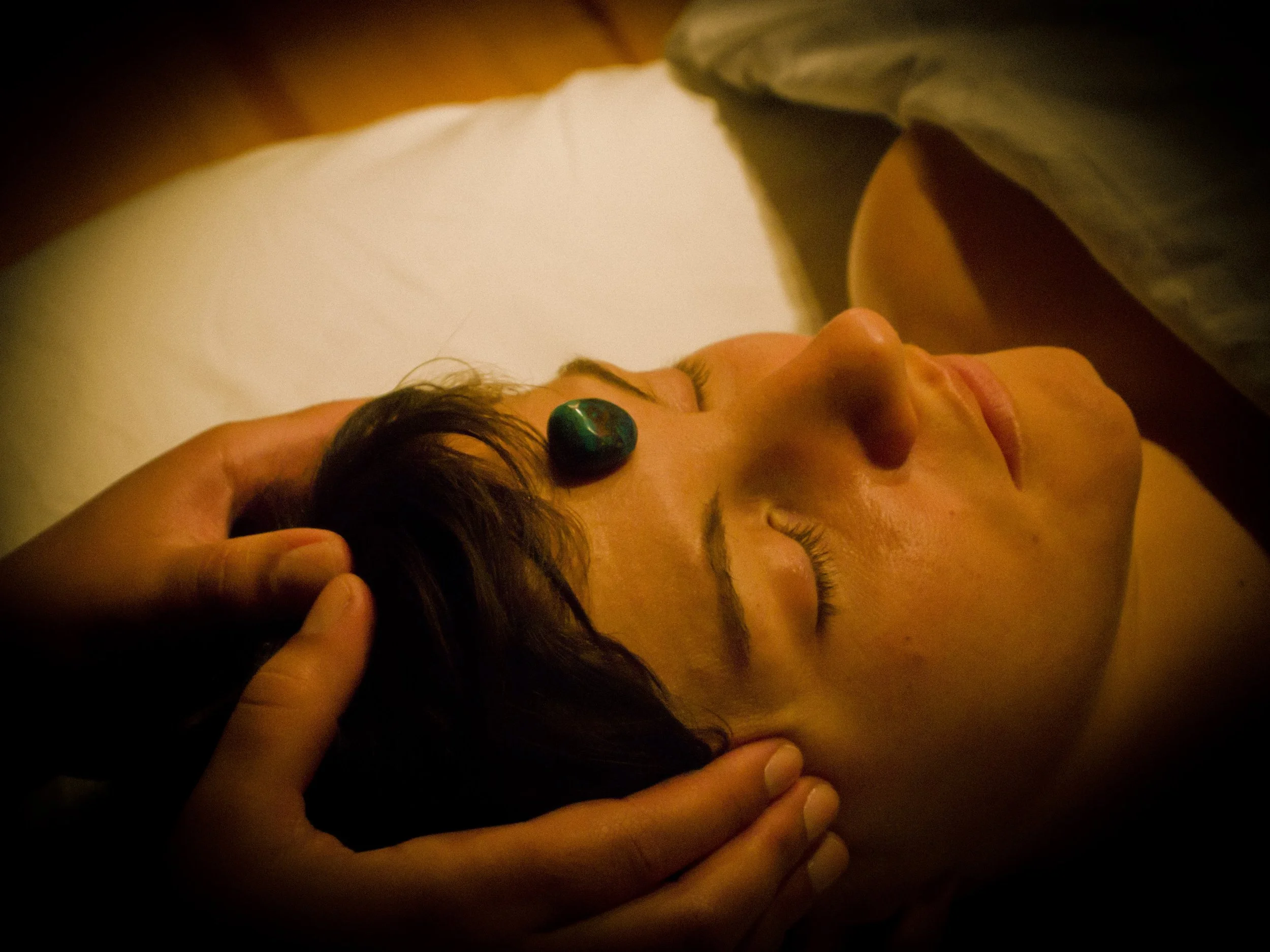Hydrotherapy deepens the bodywork experience by blending comfort with effectiveness. The use of heat and cold supports the body in ways that hands alone cannot.
Read moreFocused, Quiet, Present: My Approach to Sessions
Silence allows us both to drop into a deeper state of calm.
When you book a session with me at Breathing Space Bodywork, one of the first things you may notice is how quiet it feels once you’re settled on the table. Unlike many Registered Massage Therapists (RMTs), who often talk to their patients throughout a session, I choose not to carry on conversation while I’m working.
This isn’t about being unfriendly—it’s about creating the best possible experience for you.
Concentration and Attunement
Bodywork is a deeply intuitive practice. In order to offer you my full presence, I need to concentrate, listen, and tune in to the subtle cues your body is giving me. This level of attention simply isn’t possible if my focus is divided between a conversation and the work I’m doing with my hands. Silence allows me to notice where your body is holding tension, how it responds to each technique, and what adjustments will best support you.
A Fuller Experience for You
Talking engages the analytical part of the brain. While there’s nothing wrong with that, it can pull you out of the embodied, restful state that bodywork is designed to support. My goal is for you to feel the work—not just think about it. When you allow yourself to drop into the quiet, you can notice the shifts happening in your body, experience the release more fully, and leave the session with a deeper sense of relaxation.
Time and Presence
Many clients have told me that when sessions are filled with chatter, the time seems to pass more quickly—almost as if the bodywork itself takes a backseat. I believe that silence allows the session to feel more spacious, giving you the chance to settle into presence, rather than rushing through an hour that suddenly feels short.
What Clients Are Saying
Here’s one review that beautifully captures the experience of a quiet, attentive session:
“I really enjoyed my 60 minute massage with Tanya, and felt refreshed and relaxed afterwards. She was attentive, present, thoughtful, and quiet throughout. I love just sinking into quietude when being massaged! She has the perfect massage hands, something you can’t learn, a therapist just has, and she does! I highly recommend her.”
Her words capture the essence of why I choose silence: it allows me to stay deeply attentive, and it gives you the space to truly sink in and receive.
Your Comfort Comes First
That being said, you’re always welcome to speak if you need something adjusted—whether that’s pressure, temperature, or to ask a question. My quiet approach is about creating space for you, not about enforcing silence.
At Breathing Space Bodywork, the invitation is simple: relax, breathe, let go. By choosing quiet, I can give you my undivided attention, and you can receive the full benefit of the session.
Beyond Relaxation: How Skilled Bodywork Transforms Body and Mind
Skilled, Intuitive Bodywork
Choosing a practitioner is about trust. With over 15 years of experience and a foundation of 5-star client feedback, you can feel confident knowing you’re in good hands. At Breathing Space Bodywork, you’re invited to step away from the stresses of daily life, settle into the table, and discover what it means to truly relax, breathe, and let go.
Read moreThe Comfort of Warmth: Why Heat and Support Matter During Bodywork
Lumbar support cushion, ankle bolsters, and cervical pillows for shoulders and neck, heating pad.
One of the most overlooked—but deeply important—elements of a bodywork session is simple: comfort. Not just in the skilled hands of the practitioner or the awareness of breath, but in the warmth of the table, the weight of a blanket, and the thoughtful support placed under the ankles, knees, or head. These details may seem small, but they can be the difference between a good session and a truly transformative one.
Why Heat Matters
During bodywork, the body often shifts into a state of deep relaxation—sometimes even sleep. As the nervous system downregulates and blood flow changes, it’s common for people to feel chilled. Muscles that were previously engaged in subtle tension begin to let go, and core body temperature can drop slightly. Being cold on the table is not just uncomfortable—it can interfere with your ability to fully relax.
In my practice, I often say: It's easier to cool someone down than it is to warm someone up. That’s why I err on the side of offering a warm table, blankets, and hot towels and a heating pad. When your body feels safe, supported, and warm, your system can truly settle. And when you’re able to relax more deeply, the benefits of the bodywork reach further.
The Role of Support
Alongside warmth, physical support is essential. Bolsters, pillows, and cushions help your body feel held. A lumbar cushion under the knees, for example, can take pressure off the lower back. A bolster under the ankles or pillow under the shoulders can relieve strain that you didn’t even realize was there. These subtle adjustments allow your muscles to rest fully, without needing to brace or hold.
This kind of comfort isn’t indulgent—it’s foundational. When your body feels physically supported and warm, it stops scanning for threat. The nervous system gets the message: You’re safe here. This is the doorway to true restoration.
Comfort and the Stress Response
Stress lives in the body. Even when we think we’re managing well, our muscles may still be gripping, our breath held just below the collarbones. One of the goals of bodywork is to help interrupt that cycle—to show the body how it feels to relax, breathe, and to let go. But this can only happen if the environment is right.
Being warm and supported isn’t a luxury—it’s a necessity. A chilled body or awkward positioning can keep you just on the edge of release, never quite letting the nervous system drop into parasympathetic mode, where healing and repair happen.
A Thoughtful Invitation to Rest
At Breathing Space Bodywork, every session is designed with your comfort in mind. I take the time to ensure you’re warm enough, that you feel supported, and that small adjustments are made when needed. Whether it’s a changing the face-rest cushion, repositioning a pillow or bolster, placing a heating pad on your stomach or, wrapping your feet a warm towel, these are invitations to let your body trust the space it’s in.
Relaxation isn’t just about pressure or technique—it’s about creating a sensory environment that signals you can rest now. And when you do, the real work begins.




